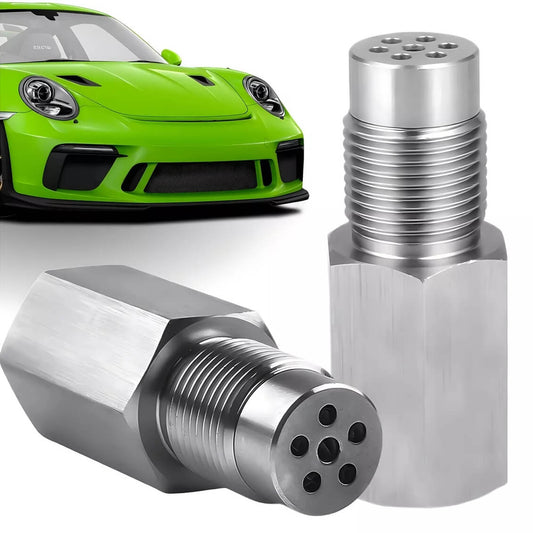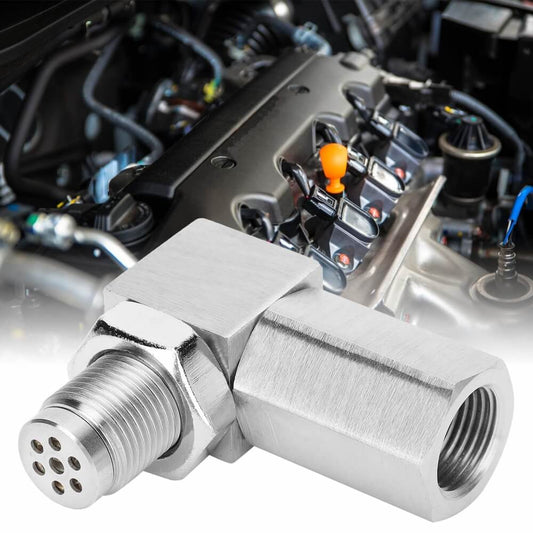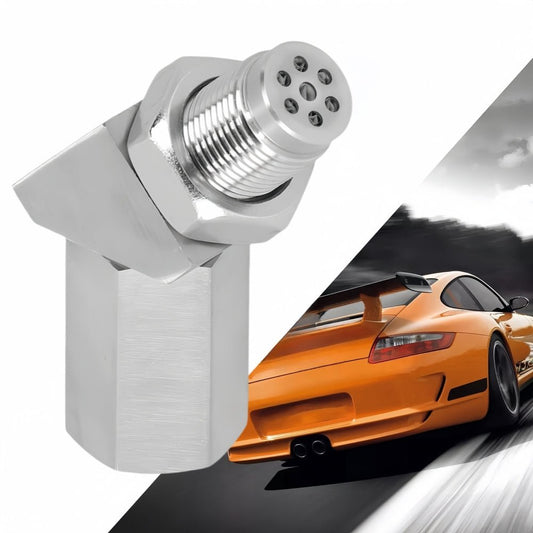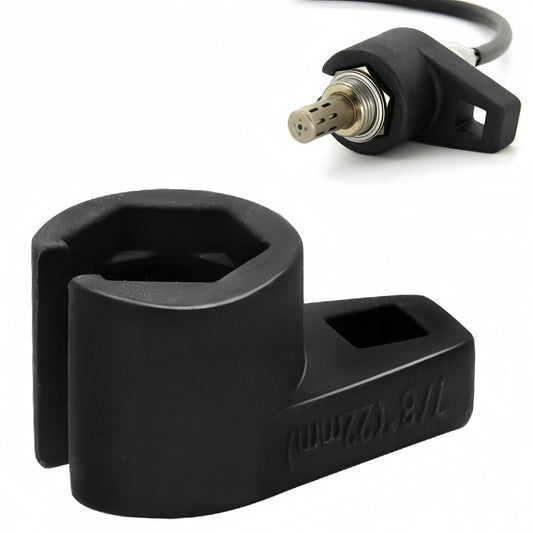Mini Catalizador: Purpose, Benefits, and Installation Guide
Share
Mini Catalizador spacers are becoming increasingly popular among car enthusiasts and DIY mechanics, especially for those with modified exhaust systems or dealing with emission control challenges. While it’s a small component, the Mini Catalizador plays a crucial role in helping manage air-fuel balance and emissions. This article explores what the Mini Catalizador is, how it works, its benefits, and important considerations before installation.

What is a Mini Catalizador?
A Mini Catalizador is a high-performance O2 sensor spacer with an integrated mini catalytic converter. It is installed between the vehicle’s oxygen sensor and the exhaust pipe, slightly distancing the sensor from direct exposure to exhaust gases. This adjustment helps prevent check engine lights (CEL) caused by high-flow catalytic converters, catless exhausts, or other modified exhaust setups.
By incorporating a built-in 400-cell catalytic element, the Mini Catalizador mimics the function of a full-size catalytic converter, reducing harmful emissions and optimizing engine performance. This modification effectively "tricks" the engine control unit (ECU) into perceiving normal catalytic function, preventing diagnostic trouble codes (DTC) such as P0420 and P0430.
How Does the Mini Catalizador Work?
Modern vehicles use oxygen sensors to monitor exhaust gases and regulate the air-fuel mixture for optimal combustion. There are typically two types of oxygen sensors:
- Upstream (pre-catalytic) O2 Sensor: Monitors exhaust gases before they enter the catalytic converter and adjusts the air-fuel ratio accordingly.
- Downstream (post-catalytic) O2 Sensor: Ensures the catalytic converter is functioning by comparing readings before and after treatment.
The Mini Catalizador primarily affects the downstream O2 sensor by reducing its exposure to direct exhaust flow. This change stabilizes emissions readings, minimizing false CEL triggers in vehicles with modified exhausts.
Benefits of Using a Mini Catalizador
- Eliminates Check Engine Lights: Helps prevent CELs related to high-flow or removed catalytic converters by optimizing sensor readings.
- Improves Engine Efficiency: A balanced air-fuel ratio enhances combustion and fuel economy.
- Enhances Performance: Reduces ECU restrictions caused by emission-related error codes, allowing for smoother engine operation.
- Easy Installation: Requires no welding or electronic modifications, making it a simple plug-and-play solution.
- Durable Construction: Made from T-304 stainless steel, resistant to corrosion and extreme temperatures.
Types of Mini Catalizador Spacers
Mini Catalizador spacers are available in various designs to accommodate different vehicle setups:
- Standard Mini Catalizador: Best for minor adjustments in exhaust gas exposure.
- Angled Mini Catalizador (45° or 90°): Ideal for installations in tight spaces.
- Extended Mini Catalizador: Provides additional distance for more accurate emission adjustments.
Legal Considerations
Before installing a Mini Catalizador, it’s important to check local emissions regulations. Some regions have strict emissions laws, and modifying or bypassing emission control devices may be illegal. Always verify compliance with local requirements before installation.
How to Install a Mini Catalizador
Tools Needed:
- Wrench or socket set
- Penetrating oil (for loosening tight threads)
- Mini Catalizador spacer
- Thread locker (optional)
Installation Steps:
- Ensure the Engine is Cool: Prevent burns by allowing the engine to cool before installation.
- Locate the Downstream O2 Sensor: Typically found near or after the catalytic converter.
- Remove the O2 Sensor: Use a wrench or socket to carefully unscrew the sensor.
- Install the Mini Catalizador: Screw it into the exhaust’s O2 sensor port.
- Reinstall the O2 Sensor: Securely screw the sensor into the Mini Catalizador.
- Check for Leaks: Start the engine and inspect for any exhaust leaks.
Key Considerations
- Compatibility: Ensure the Mini Catalizador fits your vehicle’s O2 sensor thread size (M18 x 1.5mm fits most models).
- Sensor Condition: If the oxygen sensor is already faulty, the Mini Catalizador will not resolve the issue.
- ECU Reset: Resetting the ECU may be necessary after installation to clear previous error codes.
Common Issues and Troubleshooting
- Persistent Check Engine Light: If CEL remains after installation, the vehicle may have additional emission-related issues.
- Exhaust Leaks: Ensure the spacer is properly tightened to avoid leaks.
- Incorrect Spacer Type: Using an unsuitable Mini Catalizador model may cause false readings.
Should You Use a Mini Catalizador?
A Mini Catalizador is an excellent solution for those modifying their exhaust systems, helping prevent CELs while maintaining performance. However, if your vehicle is stock, it may not be necessary. Always ensure proper installation and compliance with emission laws before making modifications.
Final Thoughts
The Mini Catalizador provides an effective way to manage emission-related concerns in modified vehicles. It is an affordable, easy-to-install solution that can prevent diagnostic headaches while optimizing engine performance. Understanding its function, limitations, and legal considerations will help you make an informed decision on whether a Mini Catalizador is the right addition for your vehicle.





